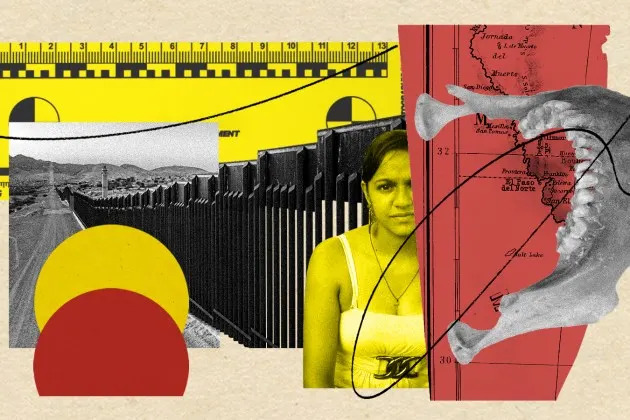
Her skeleton lay in the open air.
When they first approached the site, in the desert of Sunland Park, New Mexico, in August 2024, the volunteer search party found a body dispersed across the landscape, a rib here, a leg bone there. An intact jawbone sat crooked on the ground.
The scene was tragic, but all too commonplace. Over the past three years, the Battalion Search and Rescue group has documented an exponential rise in skeletal remains belonging to migrants, found near a New Mexico suburb.
The area is a triangle of desert, just 25 square miles, where two borders meet: U.S.-Mexico and Texas-New Mexico, a 20 minute drive from El Paso, Texas. In the past three years, volunteer search parties and authorities have found over 500 human bodies here, on U.S. soil.
The remains belong to migrants who walked through the desert with smugglers, and ostensibly died of dehydration after crossing the border. Most are desperate people, fleeing violence or persecution, risking their lives for a better future. Local immigrant advocacy organizations argue that restrictive asylum policies, enacted first under Joe Biden and now under Donald Trump, are driving these deaths, while systemic negligence from local authorities hides them from view.
This particular skeleton sat in the dust for over a year. It belonged to a 31-year-old woman named Ada Guadalupe López Montoya, who traveled to the border from rural El Salvador in June 2023, with her husband and toddler, seeking safety in the United States. Unlike most remains found in the area, Ada’s skeleton was successfully identified because the search group found her ID near the bones. I have spent the past year piecing together her story in an effort to understand why she and so many others have died here.
Two years ago, Ada, her husband, Reynaldo, and their three-year-old son traveled 2,000 miles from San Salvador to Ciudad Juárez, Mexico, in just 10 days, hidden in smugglers’ vehicles, bribing their way through Guatemalan and Mexican immigration checkpoints.
But when they got to Juárez, their last stop before entering the U.S., the smugglers went off script.
“Something was off from the start,” Ada’s sister, Pati Montoya, says in an interview. The coyotes informed the migrants that their family would need to split up. Each would cross into the United States through varied channels over a period of several days.
Separating was something the couple vowed they would never do.
There was another catch: The couple would need to pay an extra $2,000 if they wanted their toddler to cross the border in the safest manner possible. Without options, the pair acquiesced, miserably.
Under the new plan, Ada’s husband, Reynaldo, would walk first through the desert with a group of other migrants and wait in a safehouse in El Paso. Then, a few days later, their son would slip through a vehicle checkpoint, posing as the child of a U.S. citizen. Ada would be last to cross the border, alone with the smuggler.
On the eve of her departure, Ada called Pati, back in El Salvador, to say she was afraid the hike through the desert would be too strenuous. The unexpected separation from her husband and son, the continued stress of trusting shifty smugglers, the possibility of being caught by Border Patrol agents, all had knotted together into panic. “I don’t think I’m going to make it,” she said through tears.
On June 27, 2023, temperatures neared 110 degrees. Ada sent a text message to Pati, at 1:30 p.m., saying she was about to cross the border. This was the last time she would communicate with her family. When Ada did not arrive at the safehouse that night, the coyotes told Reynaldo that she had been picked up by Border Patrol agents in the desert after crossing over the border wall. After a few days, they stopped responding to the family’s questions.
In the weeks and months that followed, Ada’s family endured a painful combination of grief and disbelief. They contacted a Mexican organization called Armadillos that puts out social media alerts about missing migrants. After Ada’s image was posted on Facebook, the family received messages from unknown numbers, promising information on Ada’s whereabouts, for a fee. These people offered photo evidence, and the family paid several hundred dollars to one man, who then went silent.
Ada’s husband, Reynaldo, and their son moved in with relatives in Los Angeles, and attempted to assimilate as new, undocumented arrivals, while contending with Ada’s loss, without knowing what became of her. She simply hadn’t shown up at the meeting point. “Sometimes I would think there’s no way she’s alive,” Reynaldo says in an interview.
Because identifying documents are so rarely found in the desert, most families never learn what happened to their missing loved ones who disappear at the border.
The Montoya family waited for two years for confirmation of Ada’s death, delivered through a collective effort between Battalion Search and Rescue, the Armadillos search group, and me.
Have Faith
Ada would have been unaccustomed to media attention, though she was something of a local celebrity in the hamlet where she grew up: She was the woman who made the best tortillas. “She had that touch — not just anyone can flip tortillas,” her sister Pati says in an interview in her home in El Salvador. “When I helped her at the tortilla stand, people would approach me, mistaking me for her. She made lots of friends, she would talk to anyone and everyone.”
The Montoya family has lived for generations in a caserío, a few cinder block houses with corrugated tin roofs, off a narrow back road, an hour and a half outside San Salvador. Ada was one of ten children, and grew up tossed from one family member’s home to another. She started working after finishing the sixth grade. “She never had childhood dreams,” Pati says. “What dream could she have had?”
El Salvador in the ’90s and early 2000s was consumed by gang violence that touched every community, no matter how rural. In 2018, Pati says, during the last few years of the gang wars, Ada would find herself imprisoned for 72 hours by local police — she was falsely accused of being a gang member. The charges were dismissed by a judge, but at the hearing, over a hundred people showed up to express their support for the tortilla maker.
In 2019, Nayib Bukele, a far-right authoritarian, assumed the presidency in El Salvador. He issued a “state of exception” in 2022, effectively pausing due process — meaning that anyone picked up by the police could be imprisoned for any length of time without trial. Over the next two years, authorities arrested 80,000 people, who became a shadow, carceral population, confined to maximum security prisons with no means of contacting family and no legal process with which to appeal their sentences.
There was an immediate decline in gang violence, so despite the young men missing from nearly every community — many if not the majority of them innocent of any crimes — Bukele retains near universal approval in El Salvador.
In early 2023, rumors spread through the village that anyone with a prior criminal charge would soon be rounded up by the local police, even if the charge had been overturned by a judge. The prison sentence would be at least ten years. Ada and the others implicated in the 2018 complaint began, one by one, to flee. One of Ada’s brothers found the contact of a smuggler, and the siblings put their mother’s house up as collateral for a loan so Ada, her husband, and son could have the $44,000 dollars necessary to make it to the United States.
Ada was attempting to escape a future in the same Salvadoran prison system where President Donald Trump famously sent a group of 250 Venezuelan migrants without due process, and against their will, in March 2025.
The last anyone knows of Ada’s mental state in the final days of her life is from her phone calls with Pati. Once she was separated from her husband, Reynaldo, they could not communicate, except through proof-of-life videos sent by the smugglers. Alone in Ciudad Juárez, Pati says, Ada began to suffer from hunger pangs, and the coyote was in a state of volatile annoyance, because Ada had protested about the separation from her husband and son. Ada implied that the coyote was also drugged. There were no other migrants slated to cross the border on June 27. For the duration of the hike through the desert, she would be alone with the smuggler.
“I told her everything was going to be OK, and to have faith,” Pati says.
In the hours before she died, Ada’s goal was to get over the border wall and walk between three and five miles through the open desert, from the wall to a pickup point, a suburban parking lot, where a getaway car would be waiting.
It is in this no man’s land — between the border wall and the suburbs, on U.S. soil — where the bodies are found.
Ada’s death was part of a larger pattern. For the past two years, local nonprofit No More Deaths has marked each discovery of human remains at the Texas-New Mexico border on a map with a red dot. Now, a triangle glows next to Sunland Park.
Bryce Peterson, a volunteer with the nonprofit, started making the map in the summer of 2023, but says the deaths began to spike the previous year. He says that “2022 was the beginning of this kind of explosion,” describing the territory as a “black hole.”
Since then, the New Mexico Office of the Medical Investigator has tripled their staff of medical examiners to account for the hundreds of skeletons found at the border.
Sometimes a body is just a single bone, the search groups explain. Sometimes it has eyes and hair, and was alive just days before. Occasionally, two skeletons are found together, side by side. Nearby, there is often clothing, miscellaneous personal items like watches and hairbrushes, and bottles of water.
Sometimes, bodies are found in the backyards of suburban homes. “In the town, in areas where people are on ATVs and walking around, and where there are buildings, there are skeletal remains,” Peterson says.
This area is one of the shortest and flattest smuggling routes at the U.S. border, but temperatures top 100 degrees through the summer. And the terrain is a hall of mirrors. The ground, which is a uniform khaki, erupts into small dunes, but there are no visible hills which could be used to aid in navigation. There are dry shrubs, but no trees to provide shade.
The migrants who cross through this territory also need to avoid Border Patrol agents and their surveillance technologies, which include footprint tracking, AI imaging towers, and even a blimp. On an average day, Border Patrol picks up anywhere from zero to 500 migrants in this area to be deported to their home countries. Since Trump’s inauguration, the numbers have been very low.
The border wall is 30 feet high, and coyotes either use rope ladders to go over the top, or cut square tunnels through the metal grating between the bars, leaving quilt-like patches on its surface.
After she made it over the border wall, Ada would have begun to trudge through the dust of the triangle in the 106-degree afternoon heat, past the cattle ranches, past the AI surveillance towers, past the discarded hoodies and water bottles left by migrants. She may have walked past other migrants’ remains.
“The soil is very sandy. When you walk out there, it’s going to pull at your feet, it’s going to fill up your shoes,” says Abbey Carpenter, one of the leaders of the Battalion Search and Rescue brigade.
Near the wall, Ada might have encountered a metal beacon with a sign in both English and Spanish saying: “If you need help, push the red button. Border Patrol will arrive shortly. Do not leave the area.”
Between three and four miles in, something must have changed. Maybe she twisted her ankle, or developed sunstroke, or encountered a snake. Maybe she was severely dehydrated and fatigued. Whatever it was, she needed to move more slowly, and that wasn’t going to work for the coyote, whose objective was to transport her through the territory as quickly as possible without getting caught. The smuggler, a Mexican national, could have faced prison time as well as deportation if caught by U.S. authorities and charged with human trafficking.
In the weeks that followed Ada’s disappearance, her family made contact with the coyote. He sent a text saying Ada “didn’t want to walk” and he “wasn’t a babysitter,” insinuating that he had left her behind.
“They treat you almost like an object,” says Reynaldo, Ada’s husband.
Suddenly, Ada was alone in the desert. She was just a mile and a half from the highway, and three miles from the suburbs. We don’t know if she attempted to find help, or if she was physically incapacitated. Pati believes the coyote may have killed her himself.
Cesar Ortigoza, one of the leaders of the Armadillos search group, describes the place where the skeleton was found as “lonely,” with very little shade, just a small bush, and few signs of civilization nearby. The medical examiners, in their report, said the site was “vacant.”
Pati stayed up all night, waiting for confirmation that Ada had arrived and made contact with their sister Isabel, but the call never came. In a safehouse in New Mexico, the coyotes told Reynaldo that Ada had been picked up by Border Patrol. “They made so many excuses,” he says. But months after the disappearance, he continued to believe she might be in custody and unable to communicate. “She was already on this side,” Reynaldo explains. “And that area of New Mexico is so heavily patrolled.”
“Sometimes I feel like I’m in denial. But she would have found a way to communicate with us by now,” Pati tells me in December 2024.
A 2021 study estimated it would take a non-pregnant woman, on average, a day and a half to die of dehydration in the conditions of the borderlands in summer. Much of that time would be spent moving in and out of a tenuous consciousness, swimming through overlapping states of euphoria, confusion, loss of identity, and a fragmented sense of time and place. There would be an incremental shutdown of bodily functions.
At some time between June 27 and June 29, 2023, Ada’s body became one with the sand.
Identifying Ada
It takes three to six months for human remains to skeletonize in the desert, and by that point, a forensic anthropologist can tell general age and biological sex, but all evidence that could be used to determine a cause of death has been forfeited to the air.
“It’s just unbelievably dry. Birds, coyotes, animals will get to things really quickly… it’s like a solar oven,” says Peterson, the No More Deaths volunteer.
The members of Battalion Search and Rescue are not forensic anthropologists, but when they found Ada’s bones in August 2024, they thought the skeleton belonged to a woman. Sitting in the dust, at some distance, was a purple backpack. James Holeman and Abbey Carpenter, the pair of retirees who leads the brigade, said many of the skeletons in the desert look, in terms of the aesthetics of their clothing and other items, like they might belong to women.
No More Deaths reported the same findings in their database, which includes the sites found by authorities as well as search groups: Between 2022 and 2024, over 55 percent of remains found in the triangle were female, compared to 18 percent in previous years (similar to other sections of the border, where the vast majority of remains belong to men). Peterson calls the number “astonishing.”
Local Border Patrol agents estimate that 85 percent of the migrants they encounter in the area are single men, so for Holeman and Carpenter, the growing prevalence of women’s items, like bras, jewelry, and hair ties, accompanying the bones, raised questions.
Heidi Cerneka, a lawyer representing trafficking victims in El Paso, says in recent years she has met at least three clients, young women from Mexico and Central America, who were drugged in this area of the New Mexico desert and deposited at ranches where they endured abuse at the hands of American clientele. But Cerneka does not believe most of the skeletons belong to trafficking victims.
Battalion Search and Rescue and local Border Patrol officers say it is more likely the deaths in the triangle are cases of abandonment, migrants left behind by their smugglers when they are unable to walk fast enough to keep up with a group and evade authorities. Landon Hutchins, a Border Patrol spokesman, says that sometimes the coyotes even confiscate water, to ensure a slow migrant will die quickly, protecting a smuggling route from detection. “We’ve found children as young as one-year-olds abandoned,” he says.
In the post-pandemic era, demand for smuggling is high as migrants flee violence and economic pressures across Latin America. Criminal groups in nearby Juárez, Mexico, are inundated with business (making $10,000 to $20,000 per person), and slower migrants, a higher percentage of them women, could be falling through the cracks. It doesn’t matter to the cartel if a migrant makes it in one piece: They have already paid.
Desperate people arrive in Juárez exhausted, and migrants who have stayed in cartel safehouses say they are given one can of food a day. “They’re holding crossers for longer on the other side,” local Sheriff Kim Stewart says in an interview. “They’re dehydrated, they haven’t eaten for days.”
Hutchins said people are “expiring within a mile” of beginning their hike from the wall, dying from a combination of heat, fatigue, and the smugglers’ disregard for human life.
Battalion Search and Rescue says this indifference towards the lives of migrants is not exclusive to the coyotes, but touches local authorities and the general public as well, as if the human remains were part of the natural landscape, the deaths a part of some inevitable cycle.
When migrants die, Battalion Search and Rescue says, there is no incentive for New Mexico authorities to remove the bones. Holeman and Carpenter returned to the site where they found Ada’s skeleton in September 2024, a month after they reported it to the authorities, and medical examiners had not yet arrived to retrieve the remains.
Twisted on the ground was a pair of black Adidas track pants. Holeman says he could tell, from the smell of decay, that the deceased had been wearing them. In the process of decomposition, which is often aided by wild animals, the bones had found their way out. In one pocket of the pants was a wallet, bearing a Salvadoran ID. The face was blurred, after a year melting in the desert, but you could still make out Ada’s name.
It is rare, Holeman says, but sometimes the search group finds identifying information degrading alongside its owner — IDs, passports, birth certificates, their colors running together in the heat. They serve as haunting evidence that the bones found in the desert belonged to real people.
“There’s no mention [in the media] of what we find in the desert, which is like bibles, and love notes, and keychains with pictures of little kids, and all these clothes,” Holeman says. Instead, what Americans hear is “all this ‘invasion’ bullshit,” he adds, referring to the right-wing talking point, espoused by Trump and conservative media, that migrants are war-hardened criminals, rather than everyday people fighting to survive.
Holeman and Carpenter have noticed a pattern when they return to sites previously reported to authorities: There are always bones left behind.
“I’m not talking about teeny tiny bone fragments. I’m talking like big femurs and jaw bones,” Holeman says.
Holeman and Carpenter see this behavior as part of a broader carelessness towards the lives of migrants on the part of authorities. Sometimes, Carpenter says, when they call in a discovery, deputies from the Sheriff’s Office say they don’t have the appropriate vehicles available. Carpenter makes a point of driving across the desert in her Prius.
The couple, along with a group of volunteers, does one search each month in the New Mexico borderlands, often walking up to 10 miles through the desert in tight switchbacks. They have found 24 bodies in the past 18 months.
Holeman, a 59-year-old former marine, sees Battalion Search and Rescue as a form of vigilante justice against a broken and oppressive system. “I was in the military, and this is exactly what we do: We dehumanize a group, a country, its citizens, make a face for them, so it’s OK to kill them — lots of them. This is the kind of language in the approach to migrants now, where they’re dying by the thousands and we’re just turning our backs because they’ve been ‘othered’ so successfully,” Holeman says.
Last fall, the emotional weight of what he had discovered over years in the desert, and the isolation implied by the authorities’ neglect of the sites he found, began to take their toll on Holeman, who started taking antidepressants to cope.
“It’s an incredible, awful, open graveyard,” he says.
But U.S. authorities are not the only forces of negligence. In September 2024, Holeman says he contacted the Salvadoran embassy about Ada’s ID. The embassy went on to tell the Montoya family that the bones were already in their custody, when in reality, the bones were still sitting in the dust. They would not be removed until November 2024, three months after they were found.
The medical examiner’s report said they collected two femurs, a tibia, a mandible, several ribs, and a few smaller bones, as well as a mat of dark hair, a pair of pants, a wallet, two cellphones, and a sock.
For five months, Ada’s body waited in purgatory, caught between competing bureaucracies.
Isabel Montoya, one of Ada’s sisters, still believed it was possible another migrant stole Ada’s pants, with the ID inside, and died in them, while Ada remained alive, but pantless.
But on April 16, a DNA test confirmed that the remains belonged to Ada. Three weeks later, when I obtained a record of the test, the Salvadoran government had not yet revealed the result to the Montoya family. “The past few months, I still hoped she was alive,” Pati tells me.
Pati says she doesn’t know what to do with Ada’s home, now that her death is confirmed. “I think I’ll just leave everything where it is,” she says.
Though it has been two years, Ada and Reynaldo’s home in El Salvador appears as if they left the day before. The half-open suitcases and trash bags full of clothing and children’s toys imply a frantic rush to pack. There are photographs from every stage of Ada’s life, lying face-up on a shelf, a woman’s slippers, sitting on a plastic rack, and a child’s toy car, nestled in the weeds outside.
Repatriating Ada’s bones will be another bureaucratic odyssey, but the family plans to bury her in the local cemetery.
In a few years, Reynaldo says, he will tell his son the full truth — but for now, his mother “can’t be there with him right now, but is in a nice place, where God is protecting her.”
No Excuse
Peterson, the No More Deaths volunteer, refers to that summer of 2023 as “deadly,” because so many remains, a total of 73, were found in the Sunland Park area. No More Deaths published a report in March 2024, arguing that the rise in migrant deaths in Sunland Park, and the overrepresentation of women among the deceased, was the result of the Biden administration’s restrictive asylum policies.
Nearly a million people traveled to the Juárez-El Paso borderline between January 2022 and December 2024, to ask the U.S. government for shelter and protection. Many were families with small children, fleeing violence and economic instability in their home countries.
When it became functionally difficult to seek asylum due to restrictive policies, more migrants were pushed into the hands of smugglers. Peterson believes many of the people who walked through the triangle over the past three years never intended to cross the desert in the first place — instead, it was a “last ditch effort to bypass the asylum process altogether,” he says.
In June 2024, Biden signed an executive order limiting all access to the asylum process between ports of entry, the primary way migrants were asking for asylum. On Trump’s first day in office, the president signed an order freezing asylum access altogether, even at official ports. Now, there is no path to seek asylum in the United States, a reality most experts agree contradicts both national and international law.
In its 2024 report, the United Nations’ Missing Migrants Project wrote: “Migrant deaths and disappearances are preventable. The unprecedented number of lives lost in the last two years, and the fact that more than half of all missing migrants recorded since 2014 are linked to crisis-affected countries, bear witness to one of the greatest political failures of modern times.”
Local Border Patrol agents say that since Biden signed the fateful executive order in June 2024, and further since Trump was inaugurated, migration through the triangle has trickled to a near standstill. “Morale is high,” says Hutchins, the Border Patrol spokesman. “Now we can focus on interior enforcement.”
But Peterson notes that the beginning of the first Trump administration saw a similar decline, and then people began crossing the border again, out of pure necessity. He worries that summer 2025 will see the beginning of a new wave, and hundreds more could die in the triangle. Hundreds more people like Ada, abandoned by impatient smugglers, lost, and evaporating into the beige of the desert.
But this year, the community is watching. Alarmed by the volume of remains discovered, the local Catholic Church began organizing water bottle drops in the triangle, and in January 2025, the El Paso County Commissioners voted unanimously to approve a resolution facilitating solutions to address the deaths.
The territory is also facing new challenges. In April 2025, President Trump designated a 170-mile strip of the border wall, including the base of the triangle, as part of the New Mexico National Defense Area, transferring the land from the Bureau of Land Management to the military.
Sheriff Stewart says this decision has disrupted the work of every agency in the New Mexican borderlands. “We operate by hard and fast rules, and when there are none, we’re all just kind of staring at each other,” she says.
The sheriff is certain a tragedy will occur as a result, like someone falling off the wall and dying, and none of the authorities present knowing who to call. “There’s no excuse,” she says.
Trump also authorized troops to detain migrants within the military zone as part of their official capacity. Hundreds of migrants have already been arrested on double trespassing charges, though in June, a judge dismissed over a hundred of these charges.
“Any ‘illegal’ attempting to enter that zone is entering a military base,” Secretary of Defense Pete Hegseth said in an announcement on social media platforms.
“When people talk about illegal crossings, what’s illegal is us forcing them to make the choice to cross over the wall through the desert,” says Cerneka, the lawyer representing trafficking victims. “A certain number of them will die, and that’s supposed to make the rest of them not want to do it, but the power of desperation and hope cannot be underestimated.”
Hundreds of unidentified remains found in the triangle remain in storage, unclaimed, and hundreds more, likely, sit on the desert floor, and may never be discovered.
More bodies are out there. On a recent expedition, Holeman and Carpenter found another skeleton. Nearby, in the dust, was a set of women’s synthetic hair extensions.
More from Rolling Stone
Best of Rolling Stone
Sign up for RollingStone's Newsletter. For the latest news, follow us on Facebook, Twitter, and Instagram.


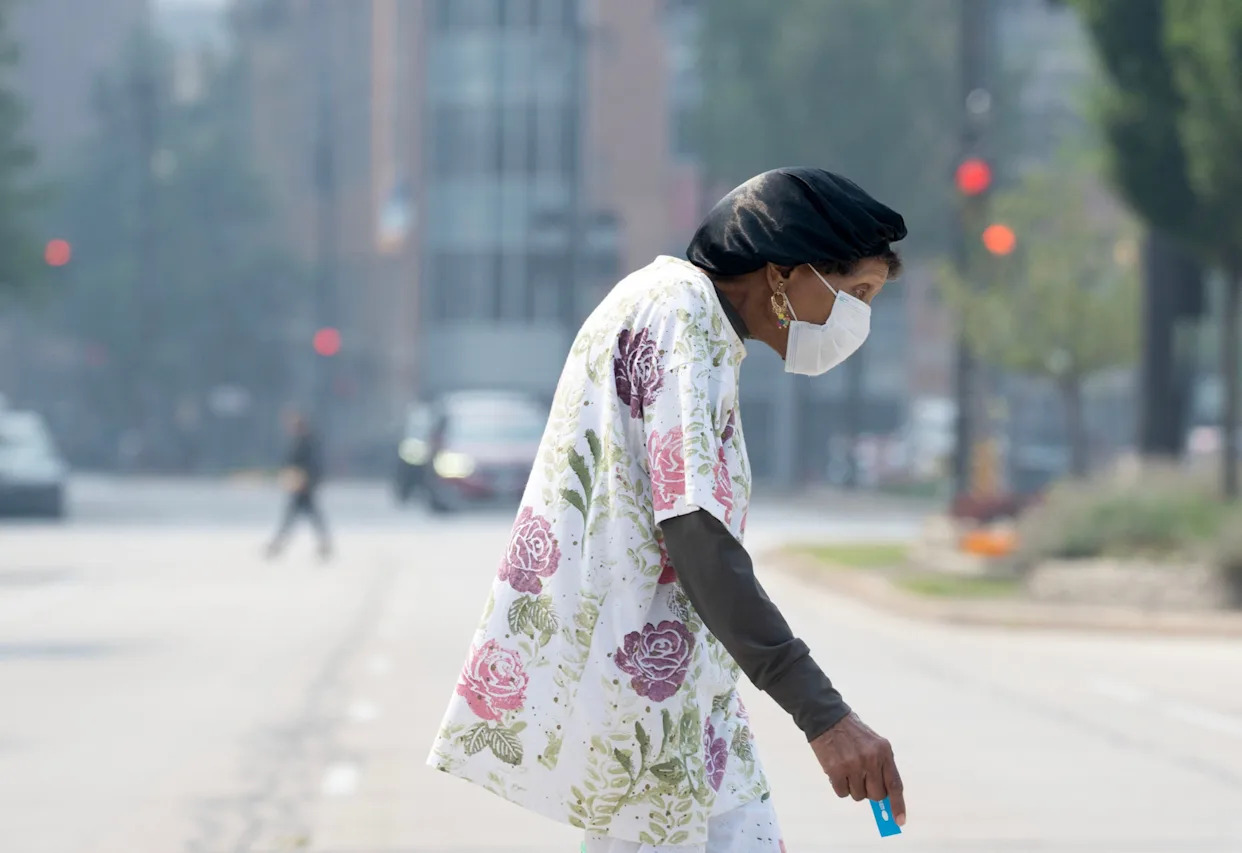
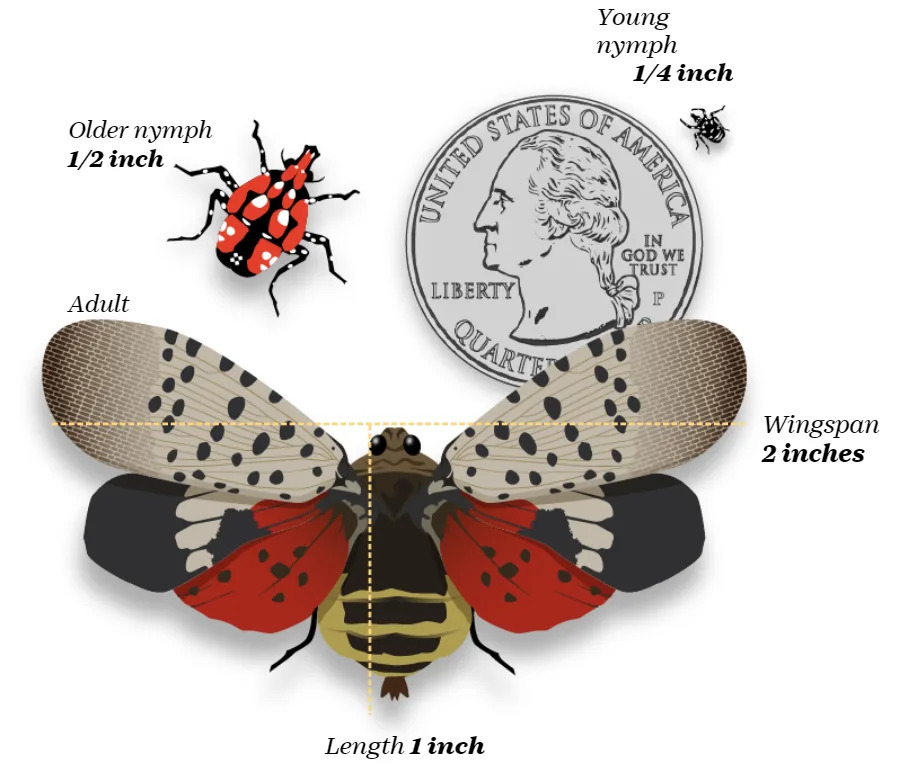
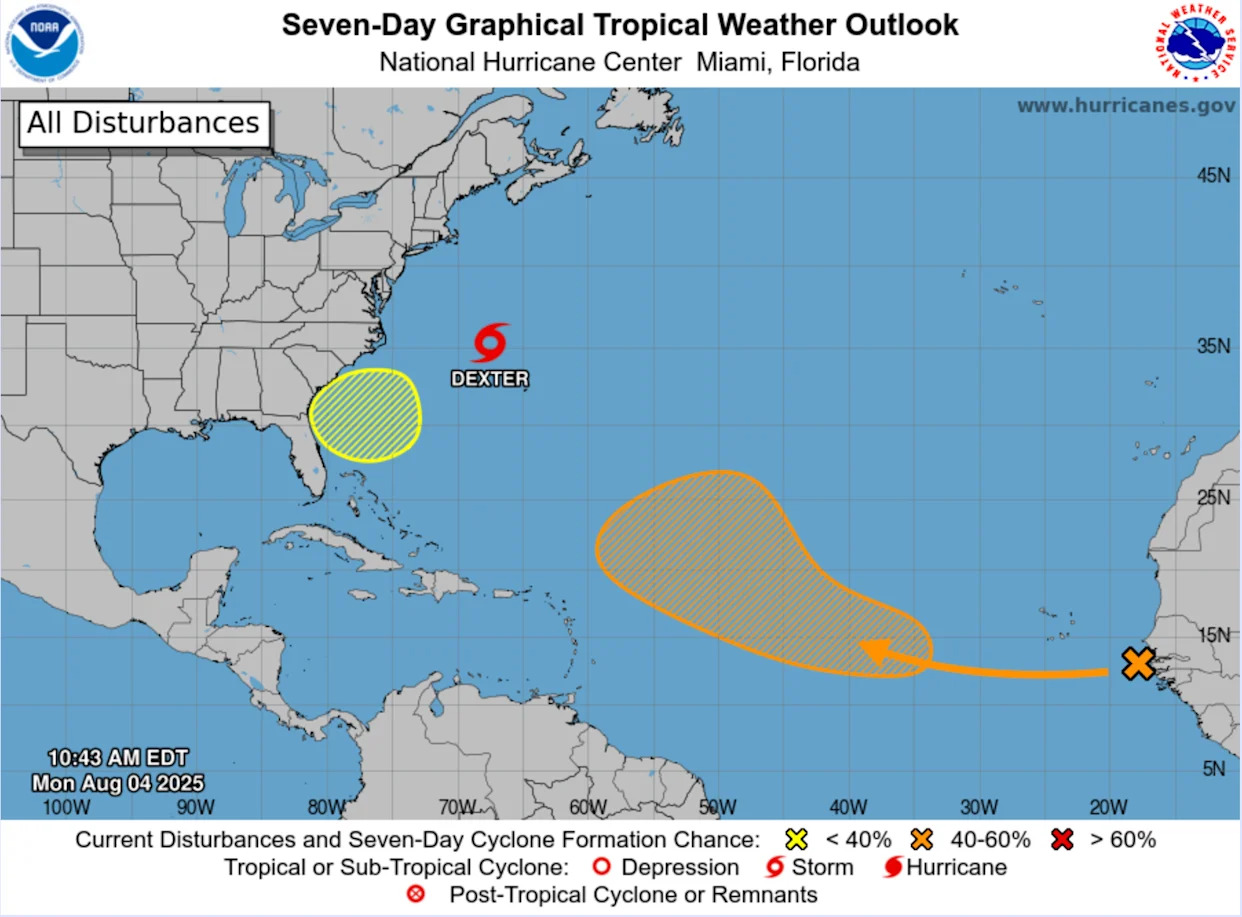

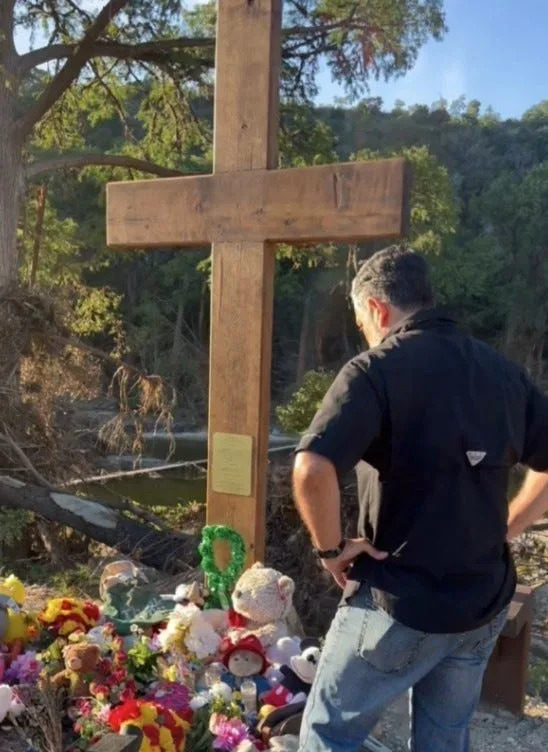
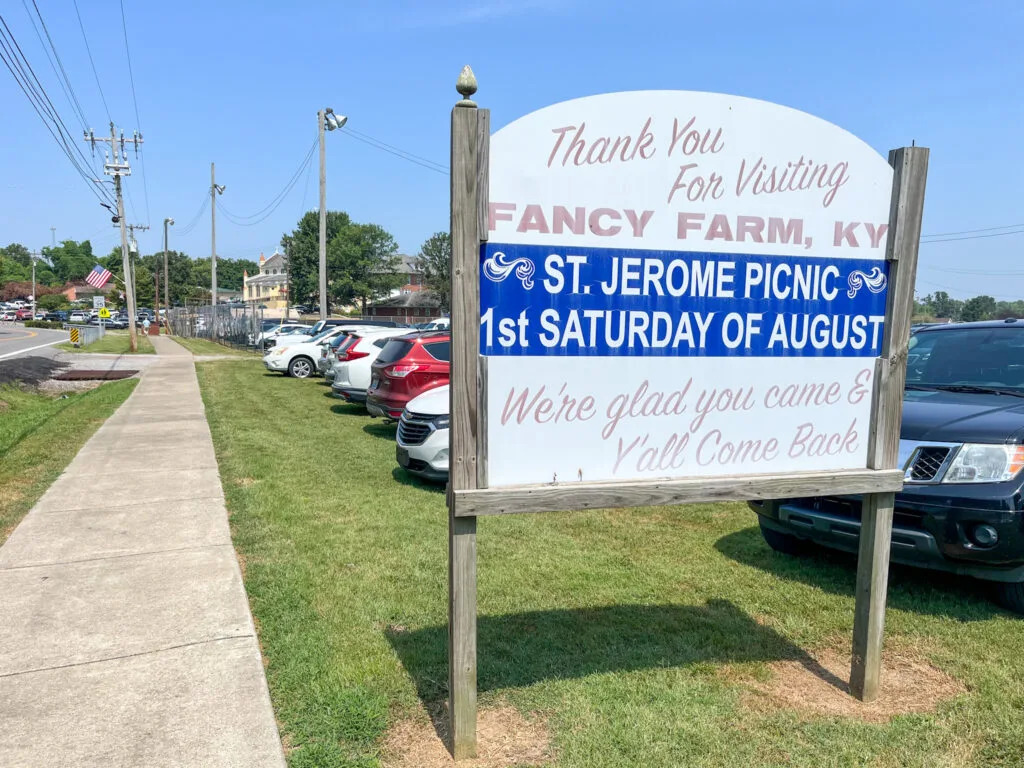
Comments